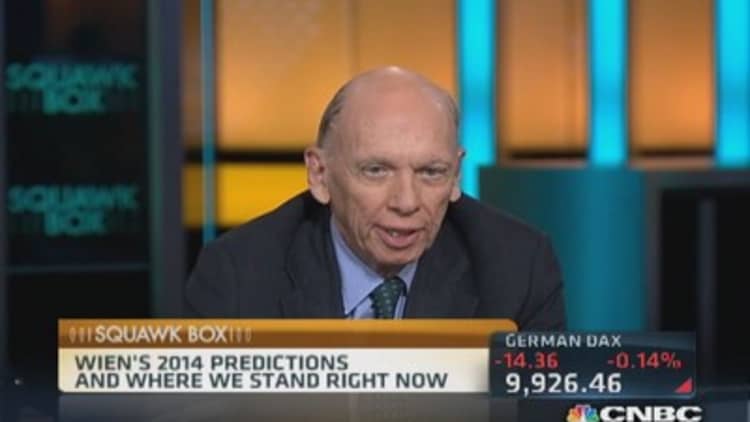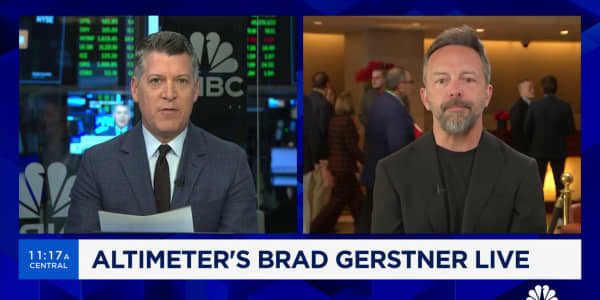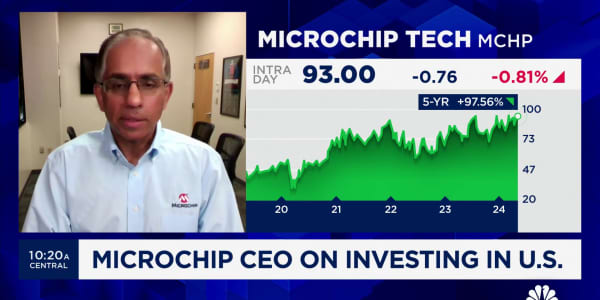A lot of smart people have been calling for a market correction for an awfully long time. And all of them have been dead wrong.
Rather than make the expected sharp move lower, markets instead have inched their way to record highs. Stock gains have been unspectacular but they indeed have been steady, defying a plethora of predictions for drop of 10 percent— or worse.
"If you started from the bottom of the market in March 2009 you could have run this story every 20 percent [the market has gone] up," said Art Hogan, chief market strategist at Wunderlich Securities. "There's been this [sentiment that] it's too far, too fast, the market's gotten ahead of itself, Wall Street's gotten ahead of Main Street, it's just the Fed—all sorts of excuses."
For all the reasons why the market should correct—or drop more than 10 percent, according to the traditional Wall Street definition—there are just as many reasons why it shouldn't.

Read MoreThis is when stocks will bottom, market pro says
Though the Federal Reserve has eased back the throttle on its easing programs, it is still buying $45 billion in bonds a month, and it still seems probably a year or more away from raising short-term interest rates.
The economic recovery, mediocre as it is, continues despite the 1 percent first-quarter gross domestic product drop that is expected to reverse through the rest of the year.
And while earnings are nothing to brag about either, S&P 500 companies did collectively increase profits by 3.35 percent in Q1—again, nothing great, but at least positive.
"What's actually happening in the marketplace is, like it or not, the movement in the market mirrors almost exactly the move in earnings growth," Hogan said. "If you look at how much the markets have gone up on a percentage basis, [earnings and the market are] almost identical or within a percentage point or two of each other."
Read MoreEight stock picks from Wunderlich
It's a hard point to argue: That 3.35 percent earnings gain compares to a 3.9 percent increase on the .
Yet the correction calls have continued, and they've not been from just the usual suspects.
Hedge fund titan David Tepper sent a tremor through the market two weeks ago when, at the SkyBridge Capital SALT conference in Las Vegas, he warned investors not to be "too fricking long" on stocks and later told CNBC he had slashed his equity exposure. Tepper has long been a market bull and even had a late-2010 rally named after him that came on the heels of statements he made during a CNBC interview.
Dennis Gartman, the widely followed author of The Gartman Letter, recently had to walk back his correction call, and a host of other prominent market names have been incorrect as well.
Read MoreCorrection roll call: Who sees a market plunge?
It is in fact the crowded correction trade that has helped prevent it from coming true.
"You may be less apt to have the correction play out because so many people are protecting against it," said Todd Salamone, senior vice president of research at Schaeffer's Investment Research. "Those are the exact people who are less apt to sell on any sign of weakness because they have protection in place."
Indeed, Salamone noted huge levels of interest in calls options—giving the holder the right to buy—in the , a popular gauge of market fear. A rising VIX generally accompanies a falling market. With the VIX at record lows, investors have been able to purchase cheap protection against a market drop.
Simply stated, the exuberance and fearlessness that generally precedes market plunges is hard to find.
Read More'Sell in May' just isn't what it used to be
"Usually corrections and bear markets occur when investors and traders are least expecting them," Salamone said. "With all the technical signs that people are listing as cautionary—when it becomes so popular and widespread and when everybody begins bracing for it, they become less reliable."
Besides, the market already has had a series of corrections, just not in the places people usually look—the so called stealth corrections that also are a popular part of current market jargon.
A few examples: According to an analysis from Jeffrey Saut, chief market strategist at Raymond James, high-flyer momentum stocks on the S&P 500 are off more than 30 percent, the average stock in the Russell 3000 is off 15 percent from the most recent high, the average stock in the S&P 600 index of small-cap stocks is down nearly 19 percent, the average S&P 500 large-cap stock is off 9 percent, and the average stock in the blended S&P 1500 is off 14 percent from its 52-week high.
Read MoreS&P 500, Russell 2K near 'inflection point': Pro
If, however, larger market damage remains limited, that will make fools of many prognosticators.
The market already has thwarted the smart-money trade espoused by many heading into 2014: short Treasurys, long small-caps and long the U.S. dollar-Japanese yen currency pair trade. Government bonds have surged amid $60 billion in fresh money to fixed-income mutual and exchange-traded funds, small caps have gotten crushed and the U.S. dollar has been weak.
"Once the smart money figures something out, the trade is over," Nicholas Colas, chief market strategist at ConvergEx, said in a note to clients. "I hear enough worry over U.S. stocks to make me think that the smart money is cautious. ETF money flows seem to confirm that sentiment. That caution may end up being right. But probably not just yet."
—By CNBC's Jeff Cox






